Jon Morton
HIME: Efficient Headshot Image Super-Resolution with Multiple Exemplars
Mar 28, 2022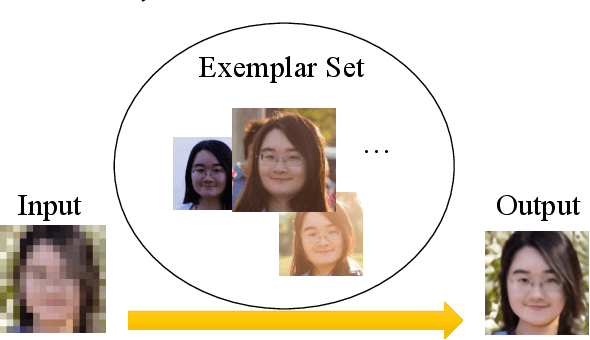
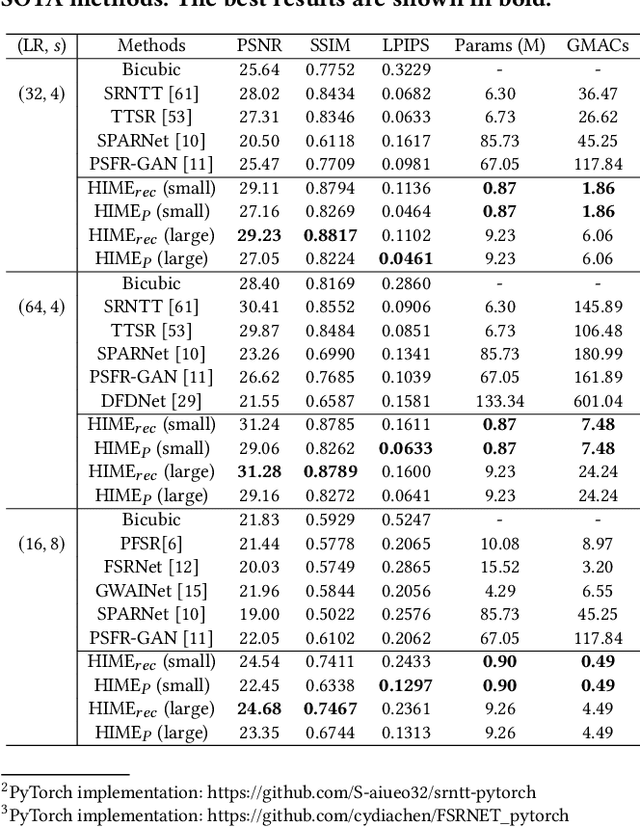
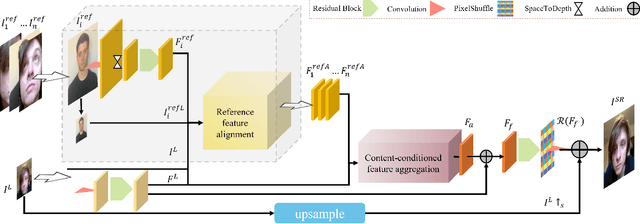
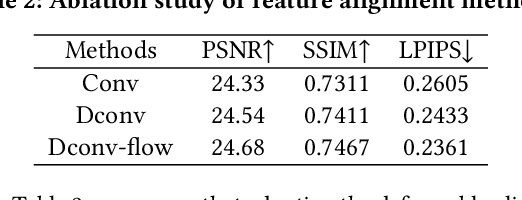
Abstract:A promising direction for recovering the lost information in low-resolution headshot images is utilizing a set of high-resolution exemplars from the same identity. Complementary images in the reference set can improve the generated headshot quality across many different views and poses. However, it is challenging to make the best use of multiple exemplars: the quality and alignment of each exemplar cannot be guaranteed. Using low-quality and mismatched images as references will impair the output results. To overcome these issues, we propose an efficient Headshot Image Super-Resolution with Multiple Exemplars network (HIME) method. Compared with previous methods, our network can effectively handle the misalignment between the input and the reference without requiring facial priors and learn the aggregated reference set representation in an end-to-end manner. Furthermore, to reconstruct more detailed facial features, we propose a correlation loss that provides a rich representation of the local texture in a controllable spatial range. Experimental results demonstrate that the proposed framework not only has significantly fewer computation cost than recent exemplar-guided methods but also achieves better qualitative and quantitative performance.
Feature-Align Network with Knowledge Distillation for Efficient Denoising
Mar 18, 2021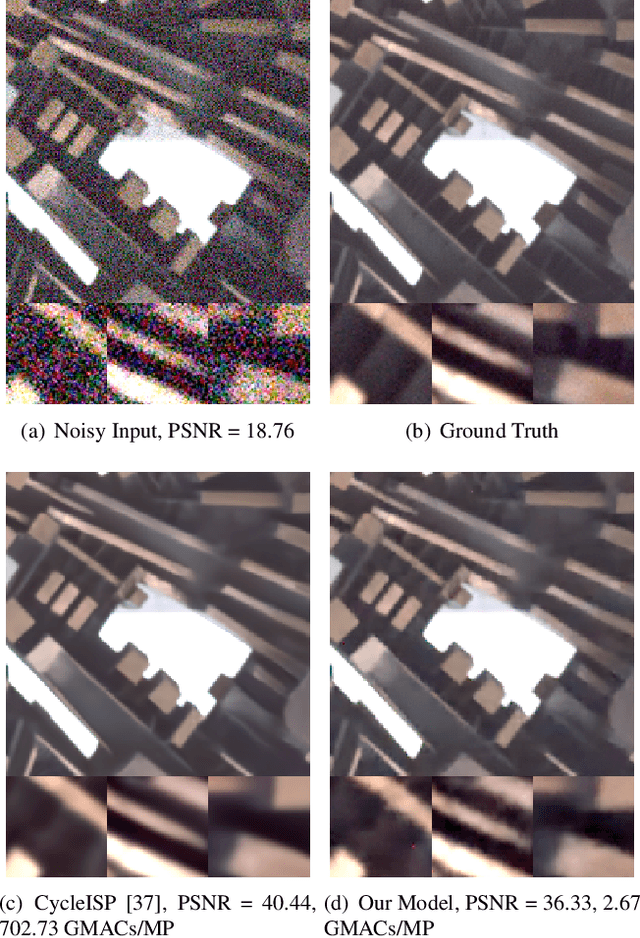
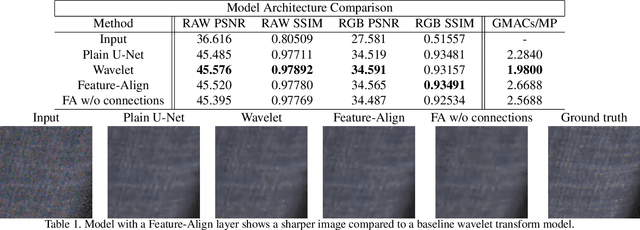
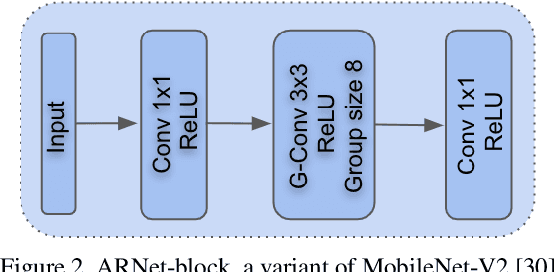
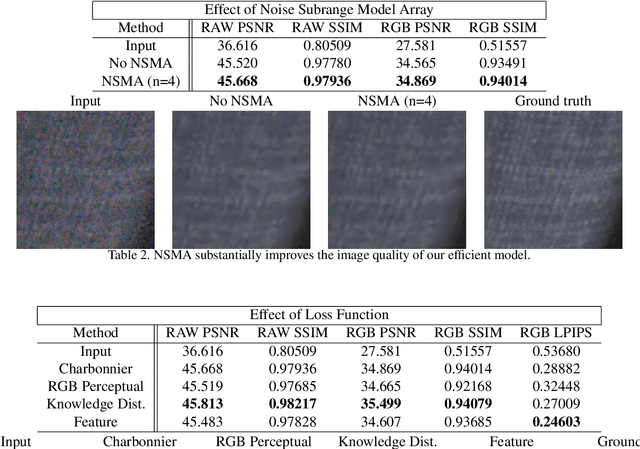
Abstract:We propose an efficient neural network for RAW image denoising. Although neural network-based denoising has been extensively studied for image restoration, little attention has been given to efficient denoising for compute limited and power sensitive devices, such as smartphones and smartwatches. In this paper, we present a novel architecture and a suite of training techniques for high quality denoising in mobile devices. Our work is distinguished by three main contributions. (1) Feature-Align layer that modulates the activations of an encoder-decoder architecture with the input noisy images. The auto modulation layer enforces attention to spatially varying noise that tend to be "washed away" by successive application of convolutions and non-linearity. (2) A novel Feature Matching Loss that allows knowledge distillation from large denoising networks in the form of a perceptual content loss. (3) Empirical analysis of our efficient model trained to specialize on different noise subranges. This opens additional avenue for model size reduction by sacrificing memory for compute. Extensive experimental validation shows that our efficient model produces high quality denoising results that compete with state-of-the-art large networks, while using significantly fewer parameters and MACs. On the Darmstadt Noise Dataset benchmark, we achieve a PSNR of 48.28dB, while using 263 times fewer MACs, and 17.6 times fewer parameters than the state-of-the-art network, which achieves 49.12dB.
 Add to Chrome
Add to Chrome Add to Firefox
Add to Firefox Add to Edge
Add to Edge